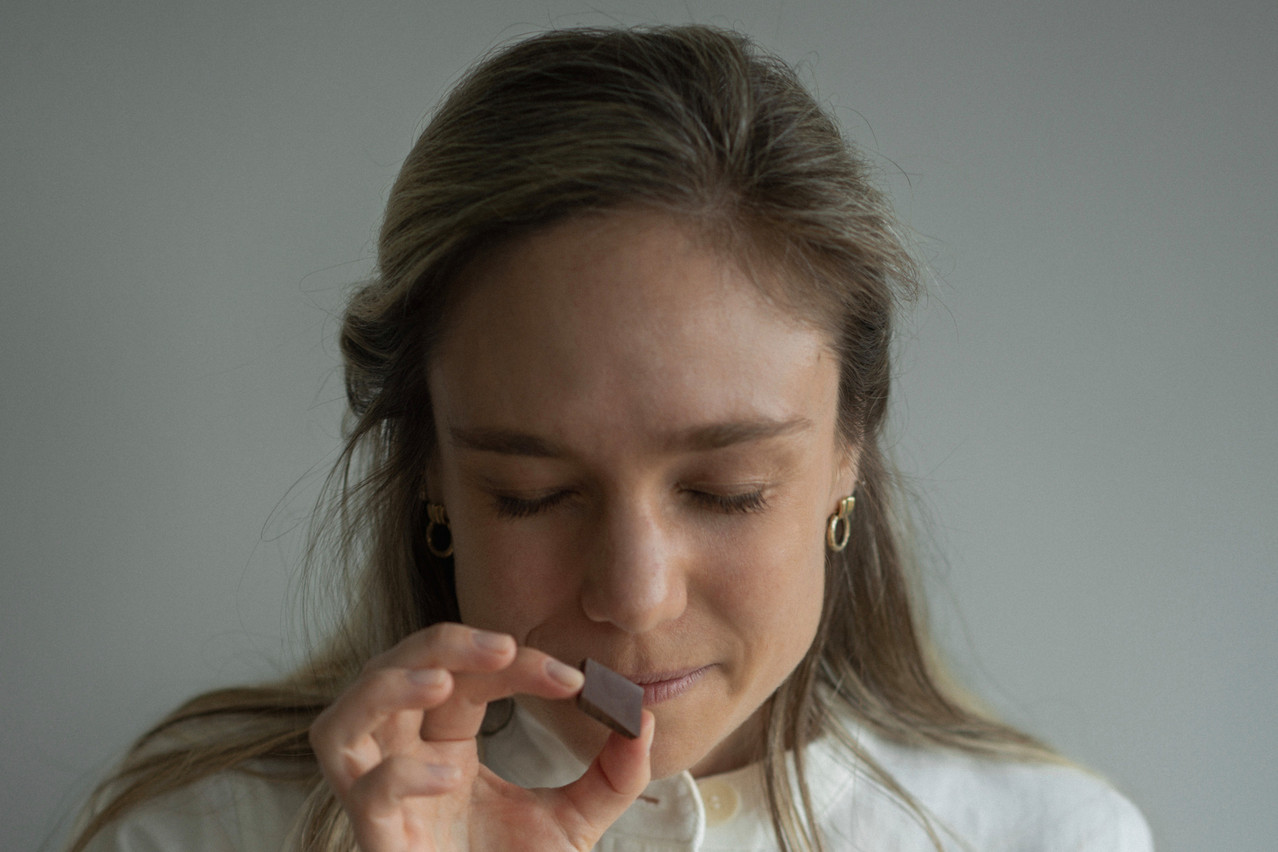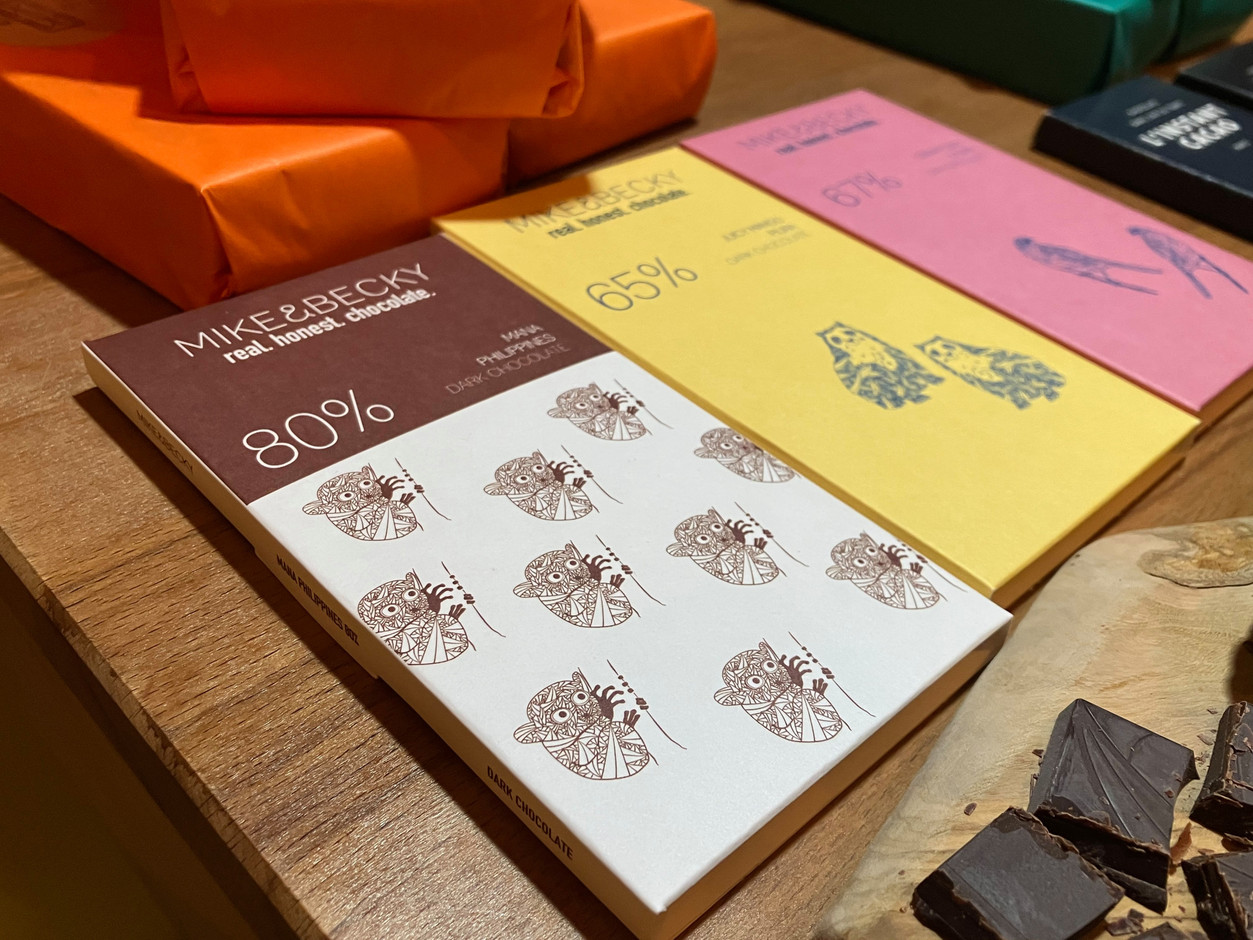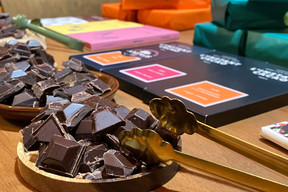“I think everyone loves chocolate, right?” Jessica Harvey begins our interview with a laugh, talking about her passion for chocolate and how she got involved in craft chocolate. “We always had chocolate at home, and it was always a moment to celebrate.”
She notes that she’s the type of person who reads the labels of all the food that she eats, and when you look at chocolate in the supermarket, they often have long lists of completely unnecessary ingredients. “You do not need more than two ingredients to make a good chocolate,” she says. “If it’s 100%, it’s just cacao. But to make anything less than 100%, you just need the cacao beans and sugar. So for me, when you see 20+ ingredients in a chocolate, it’s crazy.”
Harvey started learning more about craft chocolate--which prioritises quality and sustainability--a few years ago and became a certified chocolate taster and certified cacao evaluator, which she describes as being “like a sommelier, but with chocolate.” Blunt!, which focuses on bean-to-bar chocolate and direct-trade cacao, is a “childhood dream” for Harvey, whose background is in finance and management.
Bean-to-bar: knowing where your beans come from
We often hear about concepts like farm-to-table or the European Commission’s farm-to-fork strategy, which aims to get food from farmers or producers directly to consumers. What exactly is bean-to-bar and how can transparency be ensured throughout the manufacturing process?
“Bean-to-bar means you know exactly where the beans are coming from,” Harvey explains. “They are consciously and directly sourced, and the craft chocolate makers tailor the roasting according to the bean profile. Most of them have an impact in terms of the whole process--so, they are controlling the fermentation and the drying processes.”
The quality is the end result of putting a whole lot of love into every single part of the process
“Then, the person that is involved with the sourcing controls the transportation. A lot needs to be taken into account; cacao beans are quite a sensitive bean and they absorb a lot. So there’s high risks of contamination throughout the whole process, and this is controlled. Then those beans arrive directly to the craft chocolate makers, and then they control the whole process,” she continues. “Depending on the flavour profile of the bean, they will tailor the roasting and they do the rest of the whole chocolate-making process in-house.”
This in-depth approach can explain why craft chocolate can be so expensive. Sourcing organisations “on field” also give training and support to farmers, Harvey adds. It’s not just about the quality of the product, but also contributing to the quality of farmers’ lives. “The quality is the end result of putting a whole lot of love into every single part of the process. And this starts with the farmers.”
“Formula” of sustainability, ethics and love
To ensure this quality, Harvey conducts what she calls a “due diligence” questionnaire for chocolate. “I came up with a formula for Blunt!, which is quality equals sustainability, ethics and love,” she explains. The “love” factor involves ensuring that chocolate-makers give back to the community. “That is really related to the farmers, for example, and making sure that a lot of funds go back to the farmers, whether that is by paying them premium prices for their cacao beans, ensuring that support is provided.”
“Ethics has really got to do with making sure that there’s no child labour,” Harvey emphasises, and making sure that people are paid above market price. And sustainability relates to measures to make sure that transportation and packaging are done in a sustainable manner, whether it’s by implementing best practices or the efforts that they have in the pipeline.
For instance, one of the chocolates available for tasting at Blunt’s chocolate tasting club launch party on 18 January featured a chocolate made with cacao beans from Mexico that were transported across the Atlantic Ocean using--wait for it--a sailboat.
I had the opportunity to taste this particular chocolate, and it is, I can confirm, delicious. To me, there was a slightly fruity taste, but as Harvey excitedly explained, this flavour is entirely due to the beans and how they’re roasted. This particular chocolate had no “inclusions,” or additional ingredients like berries or other fruits--it was only made of cacao and sugar.
Raising awareness and sharing joy
Up until now, Harvey has been curating boxes of chocolates for people via Instagram, conducting corporate tasting or team-building events, or providing consultancies for chefs, restaurants or hotels. Onda Teahouse, which will also serve as the “home” for the chocolate tasting club, for example, has a hot chocolate menu where you can choose the origin and percentage of cacao in your hot chocolate, she explains.
But the chocolate tasting club is a new endeavour that has already seen keen interest from people in the grand duchy. “I did a few tasting events last year, and the more people got in touch with it, the more they were like, ‘Oh my goodness, how is it possible, we love it so much!’”
Harvey then got in touch with colleagues around the world that do the same thing and went ahead with her idea. “I thought, ‘Well, if this exists in other countries, and I still want this to happen, there’s no reason why it can’t happen!”

Each tasting of Blunt!’s chocolate tasting club will feature a selection of chocolates curated by Harvey, and each event will be different. Photo: Provided by Blunt!
The chocolate tasting club was officially launched on 18 January and will have its members-only tasting events at Onda Teahouse on the second Monday of each month, with the first scheduled to take place on 12 February.
When preparing tastings, “I use a lot of my intuition, and it’s really balancing what works together throughout the whole tasting. So I curate them according to: what experience are we going to have together? What is it that we’re looking for?” says Harvey.
Each tasting is going to be different. And that’s what’s so exciting
“Each tasting is going to be different. And that’s what’s so exciting about the tasting events. They’re going to have different chocolates, different flavour profiles, different origins, everything is going to be different. Sometimes we might have inclusions, sometimes we might not. Sometimes we might have pairings, sometimes we might not.”
An annual membership will cost €66, notes Harvey, which includes discounts to the members-only monthly tastings, as well as access to exclusive information on the “nerdiness of chocolate,” her experience and her network. But activities can also be inspired by club members, Harvey adds. Someone, for instance, might propose a “field trip” to Brussels to visit a chocolate producer.
For those who might not necessarily be interested in a membership, there will be other tasting events that are for people who would like to “pop in,” but these are not scheduled, she notes, and will be upon demand.
“Blunt! really exists to show awareness and to share the joy of chocolate, but in a real way. To show people what real, honest, true chocolate is,” Harvey concludes.
Learn more about .






